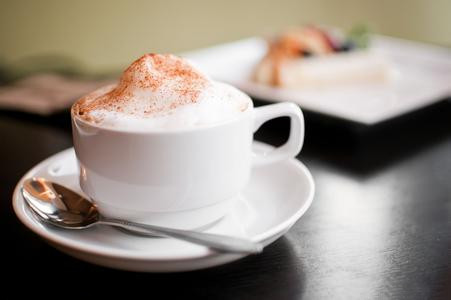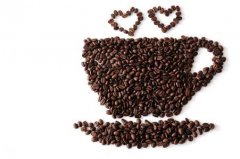Evolution from spoon to airflow baking appliance

When human beings found that coffee seeds have a special attractive flavor, it is the beginning of coffee history. This time is to transform coffee beans from being used as medicinal herbs only in East Africa and southern Arabia into one of the most popular drinks in the world, second only to oil in terms of trading volume.
Some skeptics believe that coffee beans become the second most traded goods in the world because of their caffeine content, not because of their attractive flavors (because the flavor of coffee beans must be properly roasted to show). But the flaw in this argument is clear. If caffeine alone gives coffee beans such a status, then there are also other plants that contain caffeine, refreshing and make people feel very comfortable, such as tea, Yerba Mate (), a South American holly plant called ilex paraguarensis. People in Argentina and other places drink seven times more Yabama tea than coffee. Is also one of the plants containing caffeine), cocoa beans, beans (Coca), the leaves are refined coca! (raw materials), and other less well-known crops with the same effect, why are the trading volumes of these crops far lower than those of coffee beans?
In addition, coffee flavor condiment (non-caffeinated) is also the most important taste in food processing, such as candy, cake, fudge, etc., coffee flavor is an indispensable part. Even for people who are sensitive to caffeine, most people prefer decaffeinated coffee to other non-caffeinated alternative drinks.
The aforementioned points are sufficient to prove that the rich aroma of roasted coffee beans is absolutely related to its popularity. On the other hand, there is a lot of evidence that people have to go through a period of adaptation before they can gradually experience the original pleasure of tasting coffee. For example, few children naturally like the taste of coffee from an early age, and since human beings began to drink coffee, they have always had the habit of adding other things. The earliest record is that some people add cardamom and other spices to their coffee. This tendency has evolved into Flavored Coffee in modern times. And a variety of drinks with added syrup, decorations and milk mixed with espresso.
Another greater possibility is that the aroma characteristics of roasted coffee beans, coupled with the irritating taste, are intertwined with the result of human lingering. At some point, people began to talk about the thrill of coffee and made a direct association with the deep-roasted aftertaste, and combined the two into social situations, so there were peripherals related to coffee drinks. Then, people connect the morning impression, cordial service, conversation with the coffee bar and other elements with the cafe, thus creating "coffee is not only coffee", but also represents a kind of excitement, taste, social ritual. To add complexity and richness to the coffee
Use coffee leaves to make tea and coffee pulp seasoning
Today, we can only imagine how coffee was consumed before the 16th century, but with some historical records, we can still learn a thing or two from the communities where coffee was originally produced in Africa.
For example, in the tribes of Ethiopia, people use the leaves of coffee trees to make tea for drinking; in addition, there are other records, some areas will directly chew the whole sun-dried coffee fruit, take the pulp to make cakes, soak the tea in water, crush the ripe pulp and add it to the beverage, or directly wrap the sticky coffee seeds in animal fat to eat together.
If we experience the taste of coffee in these ways, it should be difficult to believe that this crop will be the most popular beverage choice in the world today. Moreover, there are actually signs that coffee has been successfully marketed around the world over the past two centuries, in part because people's understanding of coffee crops has been improving for a long time. There is also the ever-changing baking technology (which, by reasoning, should be the main reason for making coffee drinks tastier and more attractive).
Unveil the mystery of coffee allusions
Who first thought of roasting the seeds of coffee trees? And why?
There is no doubt that we will never get the real answer to these two questions. Like other most famous foods in the world, coffee is very vague in the early history of human civilization and the source of its products. We must reason from the scattered handwritten references from the 15th and 16th centuries in the Middle East in order to have a rough idea of the cause of Guzhong.
Europeans first drank coffee in coffee shops in Syria, Egypt, Turkey and other places in the 16th century, and saw coffee bean seeds for the first time on mountain terraces in the southernmost Yemen region of the Arabian Peninsula. The more he was accompanied at that time, the botanist Linnaeus began to name and classify all kinds of flowers and plants in this new century, where coffee trees were classified as "Coffea Arabica".
Arabica coffee beans have been the only commercial tree for centuries and are still the mainstream of the world coffee trade. However, according to Linaius' hypothesis, the origin of coffee trees, lung disease in the Arabian Peninsula, but from the highland forests of central Ethiopia, was not confirmed by the Western scientific community until the middle of the 20th century. In every corner of a certain axis, Asia, Madagascar and other tropical regions, there are more than 100 wild coffee species that can be identified by classification, and only about 30 coffee species have been planted by people, most of which are planted on a small scale. One of them is called the Coffea Canephora, also known as the Robusta Coffea Robusta, which has also begun to play a major competitor to the Arabica species in commercial transactions and human fame.
No one really knows where and when Karabica's coffee beans were first planted artificially. Some historians speculate that coffee trees were first planted in Yemen; but more favorable evidence suggests that Isabia, the origin of coffee verified in botany, recorded the deliberate planting of coffee trees around 575 A.D. when it was brought to the southern Arabian Peninsula, it was already an agricultural crop.
In addition, no one is sure what is the definition of the earliest "cup of hot coffee" that people drink. As far as we know, coffee beans are seeds in small grains, a thin layer of flesh and sweet fruit. The earliest cup of "hot coffee" is not to extract the seeds of coffee beans at all, but is more likely to roast the shell of the coffee fruit a little bit and then throw it directly into boiling water to make "hot coffee"! To this day, hot drinks made in this way are still widely consumed in the Yemen area, known locally as "Qishr" (also spelled as Kishr, Kisher, and many other different spellings), and in Europe as "Coffee Sultan" (also spelled as Coffee Sultana). It is also possible that the dried fruit is roasted with the seeds, crushed and boiled in boiling water. The dried pulp shell is very sweet and contains caffeine, so any drink made from coffee pulp shell tastes sweet and has the refreshing effect of caffeine.
A question worth pondering: what makes someone from Syria, Persia or Turkey think of roasting coffee seeds at a high enough temperature so that the so-called "Pyrolysis" can be effectively carried out to fully present the most reliable flavor oil (Flavor oils) in coffee beans? This background is undoubtedly the biggest reason for the success of coffee cultural value construction!
There are all kinds of theories about the source of coffee, from the poetic ones of wasteful imagination to some far-fetched and plausible ones. According to Islamic legend, a man named Sheik Omar was banished to the Arabian wasteland around 1260. In order to stop the hunger, he tried to cook the coffee seeds directly into soup to eat, but it tasted bitter, so later he roasted the seeds and then used them to make soup.
There is another theory: when farmers in Yemen or Ethiopia went to cook with coffee branches as firewood, they discovered the value of coffee seeds because of this process. This theory often appeared in literary works at the beginning of the 20th century and has a strong storytelling nature, but it is different from a historical point of view.
Ian Bersten assumes in his provocative historical book, "Coffee rises, Tea sinks" (temporary translation) "Coffee Floats,Tea Sinks", this is a simple accident. One day, someone accidentally found that using a lightly roasted coffee pulp shell to cook a "machine luxury" drink tastes higher than the original cooking method, because it was made the same way later, and all the coffee seeds were roasted. Ian Berstein reasoned more boldly: the southern Arabian Peninsula in the 16th century belonged to the Ottoman Turkish Empire, and at that time, in order to make good use of coffee seeds that had no use before, they vigorously promoted the roasting of coffee seeds to make "luxury" drinks together.
Obviously, the Ottoman Turkish Empire was the initiator of the spread of coffee quoting habits and coffee making technology, coupled with the expanding territory of the empire at that time, indirectly promoted the exchange of coffee drinking culture and commercial transactions. Berstein further pointed out that the first area where there was a real "Roasted Coffee" was in Syria. Because Syrians, especially those in Damascus, were the first to develop metal utensils specifically used to bake coffee beans, which can produce higher baking temperatures than the traditional clay baking equipment used by the Yemens.
In addition, Berstein also believes that the smell produced by baking soot, which appears only at the beginning of pyrolysis, is a fascinating smell, even better than the taste of coffee, which may make someone enjoy it. The reason for constantly baking coffee seeds. And this kind of person knows after playing for a long time that the coffee seeds must be roasted to a high temperature before the smell will come out, and the "extravagant" drinks made from roasted coffee seeds will have a fruit-like smell.
So far, there is no way to confirm the authenticity of all these inferences. There are many records in human history that people roasted some live nuts long before humans began to bake coffee seeds, which, on the one hand, improve the taste of food, on the other hand, they are easier to digest. Maybe roasting coffee seeds is simply someone who wants to do the same. Another possibility is that maybe some people who are roasting and making "machine luxury" beverage materials accidentally leave for too long and let coffee seeds with peel shells bake for too long and come back to cook with this raw material that has been roasted for too long. Only to get an unexpected surprise.
In any case, at least we can be sure that there is the word "roasted coffee beans" in Syria or Turkey around 1550. Yes. At the beginning of words, roasting coffee beans has not only become a worldwide cultural fashion, but also the beginning of vigorous business transactions.
Important Notice :
前街咖啡 FrontStreet Coffee has moved to new addredd:
FrontStreet Coffee Address: 315,Donghua East Road,GuangZhou
Tel:020 38364473
- Prev

The dramatic evolution of the stages of coffee roasting
What I just mentioned is something that happens inside the coffee beans, so what will happen in the appearance? A few minutes before the coffee beans are heated in the baking room, we don't see much change in appearance, when the coffee beans are still grayish green and there is no sound. After a while, the appearance of coffee beans will gradually turn yellow and emit similar colors.
- Next

The roasting ceremony changes from brown to black: a new way of drinking coffee
Early baking in the Arab region is a simple program, although we do not have enough historical data to reproduce this baking program, but it should be roughly similar to the baking program still used in the Arab region today. Another European historian, William Pargrave (Uilliam Palgrave), wrote the Arab Journey to the Middle East in 1863 (temporary translation)
Related
- Beginners will see the "Coffee pull flower" guide!
- What is the difference between ice blog purified milk and ordinary milk coffee?
- Why is the Philippines the largest producer of crops in Liberia?
- For coffee extraction, should the fine powder be retained?
- How does extracted espresso fill pressed powder? How much strength does it take to press the powder?
- How to make jasmine cold extract coffee? Is the jasmine + latte good?
- Will this little toy really make the coffee taste better? How does Lily Drip affect coffee extraction?
- Will the action of slapping the filter cup also affect coffee extraction?
- What's the difference between powder-to-water ratio and powder-to-liquid ratio?
- What is the Ethiopian local species? What does it have to do with Heirloom native species?

